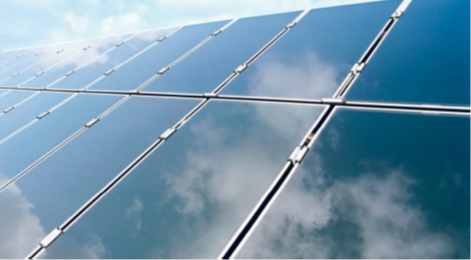Revolutionizing Modern Architecture Through Advanced Glass Technologies
The landscape of modern construction is undergoing a dramatic transformation, with architectural glass taking center stage in shaping the future of building design. As we approach 2025, innovative applications of architectural glass are redefining possibilities in contemporary architecture, merging aesthetics with unprecedented functionality. From smart glass installations to energy-efficient solutions, the evolution of glass technology is pushing boundaries and creating new paradigms in building design.
The integration of cutting-edge architectural glass solutions is not merely about creating visually stunning facades; it's about reimagining how buildings interact with their environment and serve their occupants. This transformation is driven by advances in glass manufacturing, coating technologies, and intelligent systems that enhance both performance and sustainability.
Smart Glass Integration in Contemporary Architecture
Dynamic Shading and Privacy Control
Smart architectural glass systems are revolutionizing how buildings manage light and privacy. These advanced solutions utilize electrochromic technology, allowing glass panels to transition from transparent to opaque at the touch of a button. This dynamic control not only enhances occupant comfort but also significantly reduces energy consumption by optimizing natural light and heat gain.
Building managers can now program smart glass systems to automatically adjust throughout the day, responding to changing environmental conditions and occupancy patterns. This intelligent adaptation represents a significant leap forward in building automation and energy management.
Energy Performance Enhancement
The latest architectural glass innovations incorporate sophisticated low-emissivity coatings and solar control properties. These technologies effectively manage solar heat gain while maximizing natural light transmission, creating more comfortable indoor environments while reducing HVAC loads.
Advanced interlayer technologies in laminated architectural glass are enabling better thermal insulation and sound control, making buildings more energy-efficient and comfortable for occupants. These improvements contribute significantly to achieving sustainability certifications and reducing operational costs.

Structural Glass Applications in Modern Design
Load-Bearing Glass Solutions
Revolutionary developments in structural architectural glass are enabling architects to create stunning, self-supporting glass structures. These innovations include advanced tempering processes and lamination techniques that significantly enhance the strength and safety of glass components. Buildings can now feature entire walls and floors made from specially engineered glass, creating breathtaking transparent spaces that were previously impossible.
The integration of carbon fiber reinforcement and new bonding technologies has expanded the possibilities for architectural glass in load-bearing applications. These advancements allow for larger spans and more ambitious designs while maintaining crucial safety standards.
Curved and Complex Geometries
Advanced manufacturing techniques are making it possible to create increasingly complex curved and bent architectural glass forms. These sophisticated shapes are achieved through improved heating and cooling processes that maintain optical quality while allowing for dramatic architectural expressions.
Digital design tools and precision manufacturing are enabling architects to push the boundaries of what's possible with curved glass, creating fluid forms that seamlessly integrate with modern building designs. These innovations are particularly evident in signature architectural projects where glass becomes a defining element of the building's identity.
Sustainable and Bioactive Glass Solutions
Self-Cleaning and Air-Purifying Properties
Environmental consciousness is driving the development of architectural glass with photocatalytic properties. These innovative surfaces can break down organic pollutants and maintain clarity with minimal maintenance, contributing to better air quality and reduced cleaning costs.
The integration of titanium dioxide coatings in architectural glass creates surfaces that actively combat air pollution while maintaining their transparency. This technology is particularly valuable in urban environments where air quality is a growing concern.
Biodegradable and Recycled Content
Manufacturers are developing new formulations of architectural glass that incorporate higher percentages of recycled content without compromising optical quality or performance. These sustainable solutions are helping reduce the environmental impact of building materials while maintaining high aesthetic standards.
Research into biodegradable glass compositions and circular economy principles is pushing the industry toward more environmentally responsible practices. These innovations are crucial for meeting increasingly stringent environmental regulations and sustainability goals.
Digital Integration and Smart Building Systems
Internet of Things Connectivity
The integration of sensors and digital technologies within architectural glass is enabling new levels of building intelligence. Smart windows can now communicate with building management systems, adjusting their properties based on real-time data about occupancy, weather conditions, and energy usage.
These connected glass systems are becoming central to the concept of smart buildings, providing valuable data for optimization while enhancing user comfort and energy efficiency. The ability to monitor and control glass performance remotely is revolutionizing building management practices.
Augmented Reality Applications
Emerging technologies are transforming architectural glass into interactive surfaces capable of displaying information and responding to user presence. These innovations are particularly relevant in commercial and institutional settings where information display and user engagement are priorities.
The combination of transparent display technologies with architectural glass is creating new possibilities for retail, education, and corporate environments. These applications are changing how people interact with built environments while maintaining the essential functions of building enclosure.
Frequently Asked Questions
How does smart architectural glass impact energy efficiency?
Smart architectural glass can significantly reduce energy consumption by automatically adjusting its tint based on sunlight intensity and indoor temperature requirements. This dynamic response can lead to energy savings of up to 20-30% in cooling costs and contribute to overall building efficiency.
What are the maintenance requirements for modern architectural glass?
Modern architectural glass often features self-cleaning coatings and requires minimal maintenance compared to traditional glass. Regular inspection of seals and frames, combined with periodic professional cleaning, is typically sufficient to maintain optimal performance.
How does architectural glass contribute to building sustainability certifications?
Architectural glass plays a crucial role in achieving sustainability certifications through its impact on energy efficiency, daylighting, and thermal performance. Advanced glass solutions can contribute points toward LEED, BREEAM, and other green building certifications through reduced energy consumption and improved indoor environmental quality.
